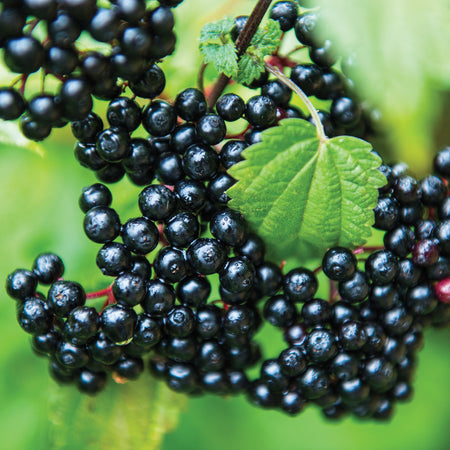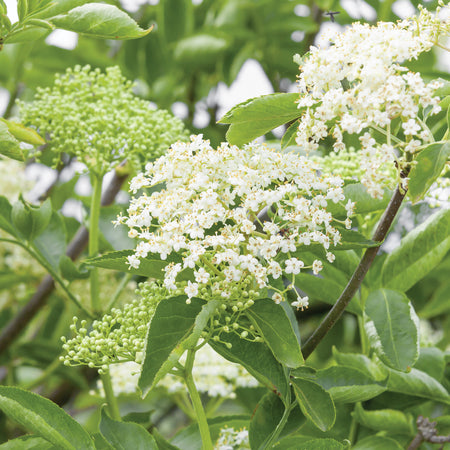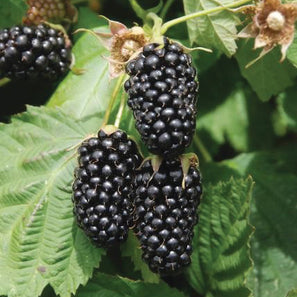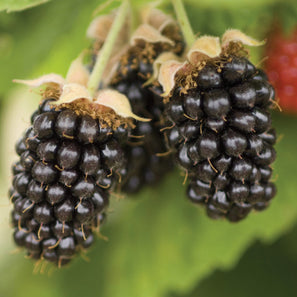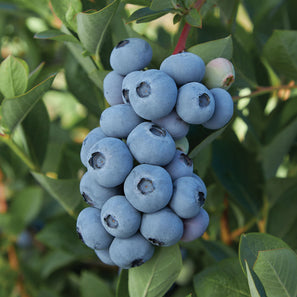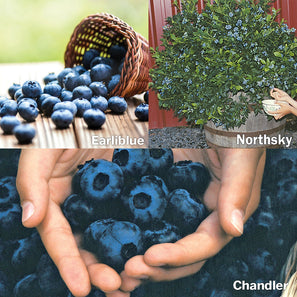ELDERBERRY COLLECTION
Product Description:
Elderberry plants are 1 ½ years old and ship in May in 3 ½ inch pots. Order early for best availability. Detailed planting information and growing instructions are included with each order, and may be obtained below. Available only within the contiguous US.
| Plant Spacing | 6–10' |
| Plant height | 6–8' |
| Hardiness Zone | 3–8 |
| Bearing Age | 2–3 years |
| Ripening Time | Fall |
| Pollinator Required | Yes |
Sambucus nigra canadensis The deciduous bush has tropical looking, green foliage and produces big clusters of fragrant, creamy white flowers in early summer. The blooms are edible and a delight to pollinators. Late summer to fall, abundant, heavy clusters of sweet, small blue-black berries droop from the shrubs. These fruit are rich in vitamin C, antioxidants, flavonoids and anthocyanins and traditionally used for wine, pies, syrup and jellies. Birds also love the berries. The non-fussy plants will thrive in a wide range of conditions, but prefer well-draining soil that’s high in organic matter and receives regular moisture.
Initial Instructions
Locate the plants in an area with well-drained soil and full sun (at least 6-8hours). Dig a hole large enough to allow the roots to spread out well, and position the plant so the soil line is at the same level as the original soil line on the stem. Water well. If your soil is especially heavy clay, consider planting the elderberries in a raised bed to improve the drainage of their soil. If you can’t plant immediately, you may heel them in by planting them in large pots filled with potting soil or compost.
Cultivation
Do not fertilize the plants for the first year from planting. After that, each spring at the onset of new growth, apply a balanced fertilizer as directed by the manufacturer. Elderberries are fairly shallow-rooted, so keep the area around the plants weed-free to reduce competition for moisture and nutrients. Mulching with compost or straw will help suppress weeds and retain moisture. Water regularly throughout the growing season. Prune in early spring prior to the onset of new growth. Remove any dead or weak stems and shape as necessary. When pruning, keep in mind that the most productive stems will be two years old.
Pollination
Plant your elderberries within approximately 60 feet of each other to optimize pollination and yield.
Pests & Diseases
Typically, elderberries are not seriously bothered by pests or diseases except birds. Protect berry crops with bird block netting.
Soil Type
Elderberries are not fussy about soil, but they thrive moist, slightly acidic,well-drained soil.
Light Requirements
Full sun
Hardiness
Elderberries are hardy to about -25ºF.
Bloom Time
May/June
Yield
Approximately 15+ pounds

